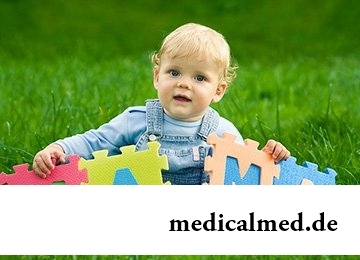





Rhinolalia
 The rhinolalia is the disturbance of an articulation caused by the wrong structure and functioning of organs of articulation (a nasopharynx, a nasal cavity, a hard and soft palate). Because of it the voice stream excessively or, on the contrary, resonates in a nasal cavity at a conversation insufficiently, and public and concordant get nasal sounding. The rhinolalia at children is characterized not only by the distorted pronouncing sounds, but also delays in development of the lexical and grammatical party of the speech because of secondary disturbances of the letter and phonemic processes.
The rhinolalia is the disturbance of an articulation caused by the wrong structure and functioning of organs of articulation (a nasopharynx, a nasal cavity, a hard and soft palate). Because of it the voice stream excessively or, on the contrary, resonates in a nasal cavity at a conversation insufficiently, and public and concordant get nasal sounding. The rhinolalia at children is characterized not only by the distorted pronouncing sounds, but also delays in development of the lexical and grammatical party of the speech because of secondary disturbances of the letter and phonemic processes.
Diagnosis of a rhinolalia consists in consultations of the otorhinolaryngologist, logopedist and maxillofacial surgeon for establishment of functional and anatomic defects of an articulation, and also extent of disturbance of an oral and written language.
Correction of a rhinolalia can include both logopedic and psychotherapeutic work, and physiotherapeutic, orthodontic and surgical treatment.
Classification and reasons of a rhinolalia
Depending on features of disturbance of interaction of a stomatopharynx and a nasopharynx distinguish the closed or open rhinolalia.
For closed like a disease the direction of a speech exhalation only through a mouth is characteristic. Because of the lowered physiological nasal resonance consonants are most strongly distorted: m, мь, N, нь. At a normal articulation air gets into a nasal cavity as the nasopharyngeal lock is open. At the absent resonance these sounds – completely oral: the m is said as, the N changes on. The conceptual framework of the speech strongly suffers because of it. Sounding of vowels is also greased as they are deprived of some tone characteristics.
According to the reasons of a rhinolalia of the closed type distinguish 2 of its forms:
- Organic. Is caused by anatomic deformations in a nasal cavity. Impassability is removed in the surgical way then defect of the speech vanishes, and breath becomes normal;
- Functional. Results from hyperfunction of a soft palate which at the expense of an elation directs an air stream through a mouth. It often occurs at neurotic frustration therefore the logopedist and the neurologist are engaged in treatment. After treatment the habit to mispronounce sounds sometimes remains.
The open rhinolalia is more widespread, than closed. Air passes at the same time through a nose and a mouth that is caused by constantly open message between an oral and nasal cavity. The nasal resonance which changes a timbre of all sounds results.
This speech disturbance can also be organic or functional. In the first case are the reasons of a rhinolalia as inborn defects (a crevice of an upper lip, a soft and hard palate), and acquired owing to injuries, hems, paresis, paralyzes or tumors. In the second case the functional rhinolalia is caused by a hypokinesis or the hypofunction of a soft palate which is expressed in its insufficient rise at phonation. Most often such rhinolalia occurs at children with a low muscle tone, with weak nervous impulses or after frequent diseases of a nasopharynx.
If the factors causing the closed and open rhinolalia are combined, then it is accepted to speak about the mixed disease type. Acoustic and articulation characteristics of the said sounds suffer because there is a leak of air through a nose at reduction of a nasal resonance.
Correction of a rhinolalia
Complex correction of a rhinolalia consists in holding the following events:
- Surgical correction of anatomic defects;
- Orthodontic elimination and prevention of repeated deformations of an upper jaw;
- Medical fortifying physical culture;
- Otorhinolaryngological sanitation for the purpose of prevention of a hearing disorder;
- Psychotherapeutic help.
Rhinolalia at children it is necessary to treat as soon as possible, it is the best of all to complete therapy before achievement of teenage age.
Main directions of the early logopedic help:
- Normalization of speech and physiological breath;
- Recovery of the correct palatopharyngeal smykaniye;
- Formation of a correct articulation;
- Correction of a sound pronunciation;
- Elimination of a nasal timbre of a voice;
- Fixing of skills of free speech communication;
- Reduction in norm of the prosodic party of the speech;
- Development of the sound analysis and phonemic perception;
- Prevention of a dysgraphia and dyslexia;
- Control over the general development of the speech.
In correctional work the sequence and systematicity of training have to be observed, and the offered material has to be evident and available. The logopedist has to watch the direction of an air stream, the provision of language and facial muscles constantly.
Efficiency of treatment of a rhinolalia depends on a number of external and internal factors:
- Expressivenesses of articulation defects;
- The accompanying disturbances and diseases;
- Terms of an initiation of treatment;
- Time and quality of the performed operations;
- Age of the patient;
 Degrees of its compensatory opportunities;
Degrees of its compensatory opportunities;- Conditions of hearing;
- Features of the personality;
- Conditions of intelligence;
- Influences of the speech environment.
After correction of a rhinolalia the result is estimated on extent of normalization of the speech and lack of a nasalization.
By preparation for comprehensive school of the children having a rhinolalia it is necessary to provide to each child individual approach and to consider not only features of a disease, but also a microsocial environment.
The correct distribution of a medical and academic load is necessary in order that the child without overfatigue could carry out all tasks facing it. Under the influence of surgical interventions children are, as a rule, weakened somatic, at them working capacity, activity and endurance is reduced. Therefore treatment of a rhinolalia has to be accurately organized. Its productivity directly depends on collaboration of doctors, teachers and other specialists.
There are very curious medical syndromes, for example, persuasive swallowing objects. In a stomach of one patient suffering from this mania 2500 foreign objects were revealed.

Nightmares belong to the most unpleasant frustration. Statistically, they happen at 4% of adults, and almost at 70% of children and...
Section: Articles about health
History of use of an anesthesia during operations contains more than 160 years. Annually in the world hundreds of thousands of surgical interventions during which to patients the substances immersing them in a dream and saving from pain are entered are carried out. Using an anesthesia to these...
Section: Articles about health
Practice of use of table salt in the therapeutic purposes contains not one century. Applications which do by means of the fabric impregnated with saline solution are considered especially effective. They have antibacterial and antiinflammatory effect, help to heal wounds, exempt fabrics from excess liquid. Hypertonic salt solution of potassium chloride is applied outwardly at many morbid conditions. Let's tell about the most known of them....
Section: Articles about health
Eyes – unique body on the structure thanks to which the person obtains about 80% of information on the world around: about a form...
Section: Articles about health
Food with the increased content of sugar is attractive to most of people - it is scientifically confirmed fact. Business here not in intemperance or dissoluteness: the sweet food is associated since childhood with feeling of rest and safety which is felt by the kid, to...
Section: Articles about health
For anybody not a secret that our country is one of the most "drinking" in the world. At clear understanding that the use of hard alcoholic drinks – occupation extremely harmful, most of Russians belong to alcoholism with unjustified loyalty. Apparently, existence of a set of myths in which tendency to excessive libations looks nearly positively is explained by it. It is worth getting acquainted with the most widespread of similar delusions and to be convinced in them not...
Section: Articles about health
Each person supports all life a SARS about 200 times. The peak of incidence falls on cold season, but to get sick from temperatures...
Section: Articles about health
Diseases of joints often begin imperceptibly for the person. The first stages of destruction of the cartilaginous tissue providing soft and free sliding of heads of bones in joint bags proceed slowly and absolutely without serious consequences. Especially unpleasantly for that this пр...
Section: Articles about health
EKO, or extracorporal fertilization - a method of treatment of infertility which became the reason of a set of broken-down copies in due time accused the people working on its creation neither more nor less of rivalry good luck. Already very few people deny the right of a method for existence, and to surprise nobody with "children from a test tube". And nevertheless, a certain magic in the procedure of artificial fertilization is, process of origin of new life is always a secret, and even it р now...
Section: Articles about health
The summer of this year in Russia was very ambiguous. Regions suffered from a merciless heat, from pouring rains, from times...
Section: Articles about health
Phobia – the persuasive fear of a certain contents shown in a specific situation against the will of the person. Concepts of a phobia and fear are similar, however if the fear is natural protective function of mentality, then the phobia is its deviation. So the person can an ispytyva...
Section: Articles about health
Sugar - the digestible refined product which is not of special value for an organism of the modern person. The use of sugar in food is based rather on the psychological dependence caused by desire to indulge itself with something tasty, and further and the biological, caused need of an organism for glucose as a result of big emissions of insulin in blood. Such circulation of insulin and glucose with continuous increase in portions of sugar is rather offensive and can become the reason for a narusha...
Section: Articles about health
Musicotherapy – a treatment method which caused and causes a set of a controversy concerning its efficiency. However the facts are relentless:...
Section: Articles about health
History of cultivation of a buckwheat contains more than five thousand years. Grain which is received from this plant is used for preparation of porridges, soups, baked puddings and puddings, do flour which is one of the main ingredients of the noodles popular in of it...
Section: Articles about health
Healthy lifestyle today in fashion, and many parents think of that the child from the early childhood played sports. Trainings will help it to become strong and hardy, will improve coordination of movements, and also will exert positive impact on mentality: it will become more collected and purposeful....
Section: Articles about health
The stroke is one of the most widespread diseases of the person, annually in the world about 6 million cases эт are registered...
Section: Articles about health
So, you resolved to lose weight. And now you try to understand what to begin with: from exercise stresses or a diet? And how to make that process of weight loss did not give you an inconvenience, and, on the contrary, brought joy?...
Section: Slideshow
The phenomenon of improvement of a condition of the patients at administration of drugs who are not containing active agents, so-called effect of placebo is known long ago. At the end of the 18th century the American doctor Perkins began to treat people the "miracle" sticks made of alloy of steel and brass. Was for several minutes to press such subject enough to a sore point that it became much easier for the patient. Having suspected Perkins of charlatanism, his colleagues tried to repeat "miracle" by means of sticks, steles...
Section: Articles about health
The advantage of swimming for the person is so high that this sport is not only the most popular, but also is widely applied in copper...
Section: Slideshow
The number of long-livers is very small. One person from 5 thousand lives up to age of 90 years, and the centenary boundary steps over only one of 20 thousand. However, doctors claim that each of us is quite able to affect own destiny. At the same time speech to Ida...
Section: Articles about health
Life of the modern woman is very difficult. Opportunities to realize itself are wide: it not only education and career, but also the most various hobbies from sport before needlework. It is not less important to build private life, paying an attention maximum to children, the husband, parents, friends. For all these affairs there is catastrophically not enough time therefore each of us tries to cut down as far as possible its expenses on necessary, but not the most fascinating housework. With it we are successfully helped by means...
Section: Articles about health
The dietology, as well as other sciences, does not stand still. Food stuffs are exposed to comprehensive study, and scientists receive new and...
Section: Articles about health
The mankind knows that some toxins at intake in the minimum quantities have therapeutic effect from an extreme antiquity. Many substances recognized poisonous are applied in the medical purposes also today, being the main deystvuyushch...
Section: Articles about health
About 10-15 years ago existence of the computer in the apartment of the Russian was considered as a rarity and office rooms were only at the first stage of equipment by these useful devices. Today practically in each house there is a computer (and often not one), and a regular user is already every our second compatriot. Convenience and efficiency of personal computers are undoubted, but the people working with them daily have to know also about health hazard which they can predstavlit...
Section: Articles about health
For residents of the countries of Southeast Asia various algas are an obligatory component of a daily diet. Their priest...
Section: Articles about health
Dark circles (bruises) under eyes – a shortcoming with most of which often fight against the help of cosmetics (proofreaders, saloon procedures and so forth), eliminating only its visibility. However, according to doctors, skin around eyes – the indicator of many disturbances in an organism...
Section: Articles about health
The Genetically Modified Organisms (GMO) are plants or animals (as a rule, agricultural) to whose genotype purposeful changes were made. Opposition of supporters and opponents of inclusion of such organisms in foodstuff always was very acute. Not only scientists and dietitians, but also a large number of the people who are not specialists in this question are involved in active disputes today....
Section: Articles about health
